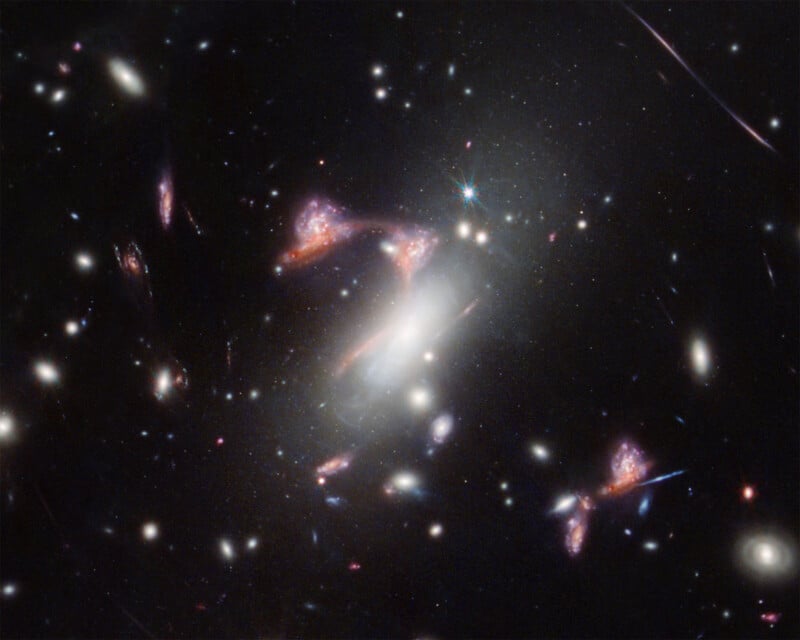![]()
Astrophysicist Jacqueline McCleary from Northeastern University explains the science behind a new image captured by NASA’s James Webb Space Telescope (JWST). The image reveals a cosmic formation resembling a question mark, stirring excitement among astronomers.
PetaPixel has featured this image already, but in a Northeastern University article, McCleary offers much more information about it. McCleary explains that this intriguing formation results from a rare alignment between two distant galaxies and a phenomenon known as gravitational lensing. This occurs when matter, such as a galaxy cluster or a point particle, bends light from a far-off source as it travels toward an observer.
The Webb Telescope captured this exciting formation, which is the result of gravitational lensing between remote galaxies. It’s a unique image because it offers new insights into the early stages of the universe’s birth and development.
“There’s still a lot of mystery surrounding this system. What’s truly astonishing about it is that gravitational lensing — with its multiple images, brightening, and magnification—enables us to study the process of galaxy assembly, which is how a galaxy constructs itself, in incredibly detailed and spatially resolved ways,” McCleary states.
The astrophysicist notes that one galaxy appears five times thanks to gravity’s warping effect. Two of these instances are shown by the glowing blue clusters near the top of the question mark formation.
These images are essential for astronomers and astrophysicists, who, despite centuries of research, continually endeavor to answer the fundamental question about the universe: How are galaxies formed?

However, McCleary clarifies that the “question mark pair,” as astronomers have come to call this formation, isn’t actually shaped like a question mark.
“The warping of spacetime caused by the galaxy cluster stretches out the light from these two different galaxies, much like a funhouse mirror,” McCleary explains. “They’re not truly question mark-shaped. They merely appear that way from our vantage point here on Earth.”
What stands out most about the image is not so much what it depicts, but rather when it shows, McCleary says. The rare combination of cosmic alignment and gravitational lensing has effectively created a time machine: This galaxy cluster is so distant that the light being captured by the Webb telescope is from seven billion years ago, roughly half of the universe’s current age.
The image offers an unprecedented glimpse into what McCleary refers to as the “adolescence of the universe.”
“It’s going through its growth spurt,” McCleary comments. “This is when stars are being formed, when galaxies are being built extremely actively, and when galaxy clusters are beginning to assemble. The Webb telescope lets us study all of these processes, particularly the formation and evolution of galaxies, in a level of detail that was previously inaccessible to us. It truly is a remarkable instrument that provides us with insight into a remarkable period in the universe’s history.”
Image credits: Credit: NASA, ESA, CSA, STScI, Vicente Estrada-Carpenter (Saint Mary’s University)
